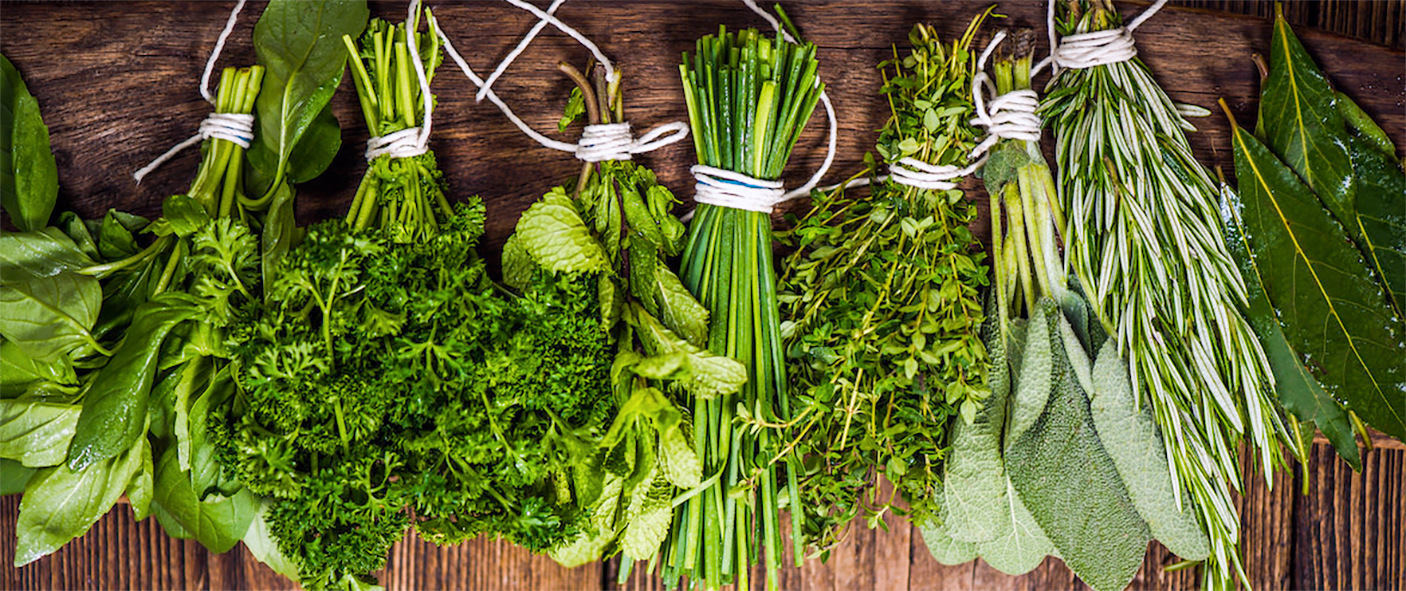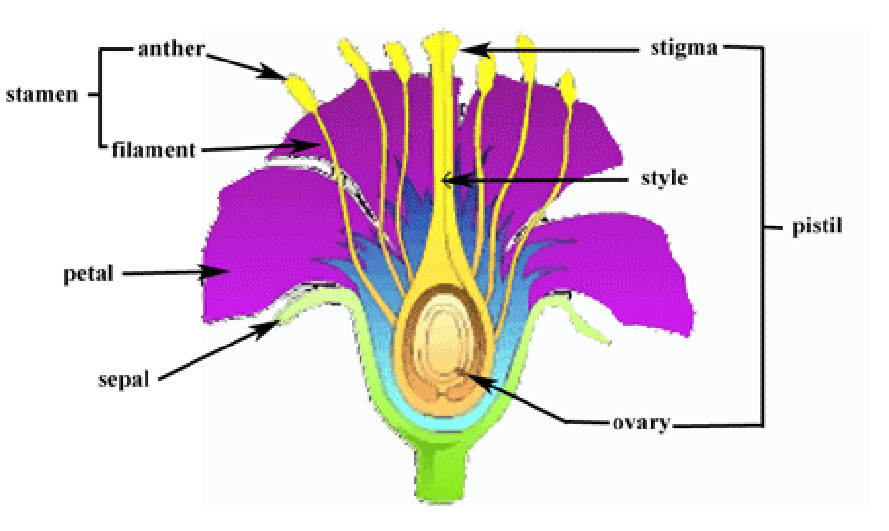 A mixture of culinary herbs shown tied next to each other and ready for drying.
A mixture of culinary herbs shown tied next to each other and ready for drying.
Welcome to FabulousFusionFood's Edible Flowers Guide. This is the home page of the edible flowers guide presented on this site that lists, provides descriptions for and gives links to foods that use that edible flower, with over 50 edible flowers listed.
This is a the first is a series of pages describing the spices, herbs, edible flowers and wild foods that you can use as ingredients on this site. I hope that these pages will allow my visitors to better navigate this site. As well as displaying recipes by name, country and region of origin I am now planning a whole series of pages where recipes can be located by meal type and main ingredient. This page gives a link to the individual herbs added to and described on this site.
In many ways, edible flowers are the forgotten area of the culinary arts. They were far more ubiquitous in their use during the Medieval and Elizabethan period, used for decoration and flavouring. Candied flowers are still used for cake decoration, even today. But flowers can be much more than that. They can be main ingredients in soups, used for flavouring, battered and deep fried as snacks, used for flavouring liqueurs and syrups and, of course, used as edible garnishes for cakes and salads.
The word flower derives from the Middle English flour, which referred to both the ground grain and the reproductive structure in plants, before splitting off in the 17th century. It comes originally from the Latin name of the Italian goddess of flowers, Flora. The early word for flower in English was blossom,[4] though it now refers to flowers only of fruit trees.
Edible flowers are those flowers, that, typically before or just after pollination can be eaten as food. Most commonly, it's typically the petals that are consumed.
 Image showing the parts of a typical flower.
In general, it's the petals that are the edible part of the flower. The stamen is the male part of the flower that produces pollen. As some pollens can be allergenic it is best to remove the stamens from any flowers before you consume them (do this with a pair of tweezers). The pistil is the female part of the flower and this can often be bitter and unpleasant in taste. It's best to remove this part of the flower as well. When removing the petals from a flower for consumption do so at the very last minute, just before you need to prepare them. Also, the white or pale 'heel' (base) of the petal can be bitter and should be cut off before using the petals.
Image showing the parts of a typical flower.
In general, it's the petals that are the edible part of the flower. The stamen is the male part of the flower that produces pollen. As some pollens can be allergenic it is best to remove the stamens from any flowers before you consume them (do this with a pair of tweezers). The pistil is the female part of the flower and this can often be bitter and unpleasant in taste. It's best to remove this part of the flower as well. When removing the petals from a flower for consumption do so at the very last minute, just before you need to prepare them. Also, the white or pale 'heel' (base) of the petal can be bitter and should be cut off before using the petals.
 Example compound flower, the marigold.
For compound flowers such as the marigold pictured here (a compound flower ie flower head that superficially appears to be a single flower; but upon closer inspection reveals a row of outer petals arranged in a radiating shape around the inner disc flowers), sunflowers, daisies, etc, the petals should always be detached from the main flower body. For these types of flower only the petals are edible.
Example compound flower, the marigold.
For compound flowers such as the marigold pictured here (a compound flower ie flower head that superficially appears to be a single flower; but upon closer inspection reveals a row of outer petals arranged in a radiating shape around the inner disc flowers), sunflowers, daisies, etc, the petals should always be detached from the main flower body. For these types of flower only the petals are edible.
Exceptions to the rules given above are large flowers which are going to be stuffed and smaller flowers such as violas and primroses which can be eaten whole. Typically, as well, the pollen of flowers is avoided at all costs. However, there are, once more, exceptions to this rule and the pollen of the reedmace plant is much sought-after as a flour substitute.
As always, if you are in any doubt as to the recognition of a plant and its flowers then do not consume. The guide here will help you in your identification, but some flowers can be similar across species, making identification difficult. Also, as with any new food, only consume a small amount initially, in case you have an allergic reaction. Use flowers sparingly in your recipes as they can lead to digestive problems in some people.
Never use flowers from the lily (lilium) family, as they are all poisonous, also avoid the flowers of the solanacea family (potatoes, peppers, aubergines, tomatoes etc) as these are also poisonous. You should also avoid the following flowers: azalea, crocus, daffodil, foxglove, oleander, rhododendron, jack-in-the-pulpit, lily of the valley, and wisteria.
Overall it is best to grow your own edible flowers as, this way, you know what they are, know they are safe to eat and know that they are free from pesticides and other toxins (which is why you should not buy flowers from your local florist for consumption). These days, however, there are a number of companies on the web that sell flowers specifically for human consumption. It's best to pick flowers just before you want to use them and when they are just opened, then wash carefully in cold water. Adding a little salt to the water will help get rid of any insects. Once well washed, carefully pat dry on kitchen paper or allow them dry naturally at room temperature. They can then be stored in the refrigerator in a plastic bag until ready to use but preferably not longer than 3 days. Jump to edible flowers beginning with:
A B C D E F G H I J K L M N O P Q R S T U V W X Y Z
You can also use the search box below to find the herb of your choice. You can use the common name or the scientific name or any text you choose:
This is a the first is a series of pages describing the spices, herbs, edible flowers and wild foods that you can use as ingredients on this site. I hope that these pages will allow my visitors to better navigate this site. As well as displaying recipes by name, country and region of origin I am now planning a whole series of pages where recipes can be located by meal type and main ingredient. This page gives a link to the individual herbs added to and described on this site.
In many ways, edible flowers are the forgotten area of the culinary arts. They were far more ubiquitous in their use during the Medieval and Elizabethan period, used for decoration and flavouring. Candied flowers are still used for cake decoration, even today. But flowers can be much more than that. They can be main ingredients in soups, used for flavouring, battered and deep fried as snacks, used for flavouring liqueurs and syrups and, of course, used as edible garnishes for cakes and salads.
What is an Flower?
A flower, also known as a bloom or blossom, is the reproductive structure found in flowering plants (plants of the division Angiospermae). Flowers consist of a combination of vegetative organs – sepals that enclose and protect the developing flower, petals that attract pollinators, and reproductive organs that produce gametophytes, which in flowering plants produce gametes. The male gametophytes, which produce sperm, are enclosed within pollen grains produced in the anthers. The female gametophytes are contained within the ovules produced in the carpels.The word flower derives from the Middle English flour, which referred to both the ground grain and the reproductive structure in plants, before splitting off in the 17th century. It comes originally from the Latin name of the Italian goddess of flowers, Flora. The early word for flower in English was blossom,[4] though it now refers to flowers only of fruit trees.
Edible flowers are those flowers, that, typically before or just after pollination can be eaten as food. Most commonly, it's typically the petals that are consumed.
 Image showing the parts of a typical flower.
Image showing the parts of a typical flower.
 Example compound flower, the marigold.
Example compound flower, the marigold.
Exceptions to the rules given above are large flowers which are going to be stuffed and smaller flowers such as violas and primroses which can be eaten whole. Typically, as well, the pollen of flowers is avoided at all costs. However, there are, once more, exceptions to this rule and the pollen of the reedmace plant is much sought-after as a flour substitute.
As always, if you are in any doubt as to the recognition of a plant and its flowers then do not consume. The guide here will help you in your identification, but some flowers can be similar across species, making identification difficult. Also, as with any new food, only consume a small amount initially, in case you have an allergic reaction. Use flowers sparingly in your recipes as they can lead to digestive problems in some people.
Never use flowers from the lily (lilium) family, as they are all poisonous, also avoid the flowers of the solanacea family (potatoes, peppers, aubergines, tomatoes etc) as these are also poisonous. You should also avoid the following flowers: azalea, crocus, daffodil, foxglove, oleander, rhododendron, jack-in-the-pulpit, lily of the valley, and wisteria.
Overall it is best to grow your own edible flowers as, this way, you know what they are, know they are safe to eat and know that they are free from pesticides and other toxins (which is why you should not buy flowers from your local florist for consumption). These days, however, there are a number of companies on the web that sell flowers specifically for human consumption. It's best to pick flowers just before you want to use them and when they are just opened, then wash carefully in cold water. Adding a little salt to the water will help get rid of any insects. Once well washed, carefully pat dry on kitchen paper or allow them dry naturally at room temperature. They can then be stored in the refrigerator in a plastic bag until ready to use but preferably not longer than 3 days. Jump to edible flowers beginning with:
A B C D E F G H I J K L M N O P Q R S T U V W X Y Z
Using this Guide
To use this guide simply click on the first letter of the herb that you're looking for (above or below). This will take you to a table of all the herbs that begin with that letter where you can chose the herb you want. There are over 50 herbs in his guide so far, including common and rare herbs and herbs used in cuisines from around the world, and you can search by common name and scientific name.You can also use the search box below to find the herb of your choice. You can use the common name or the scientific name or any text you choose: